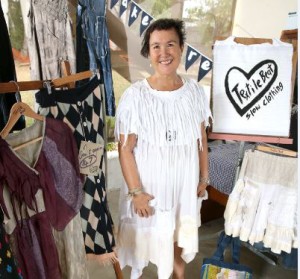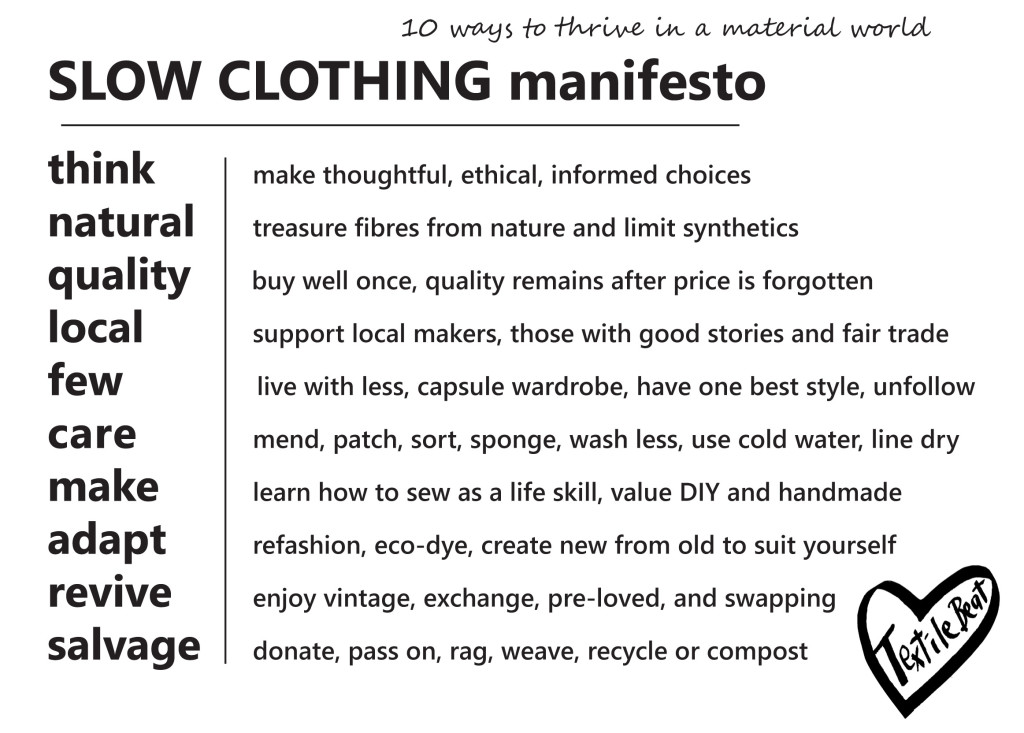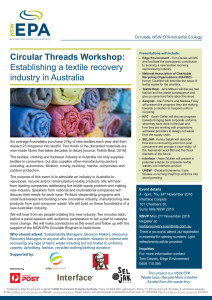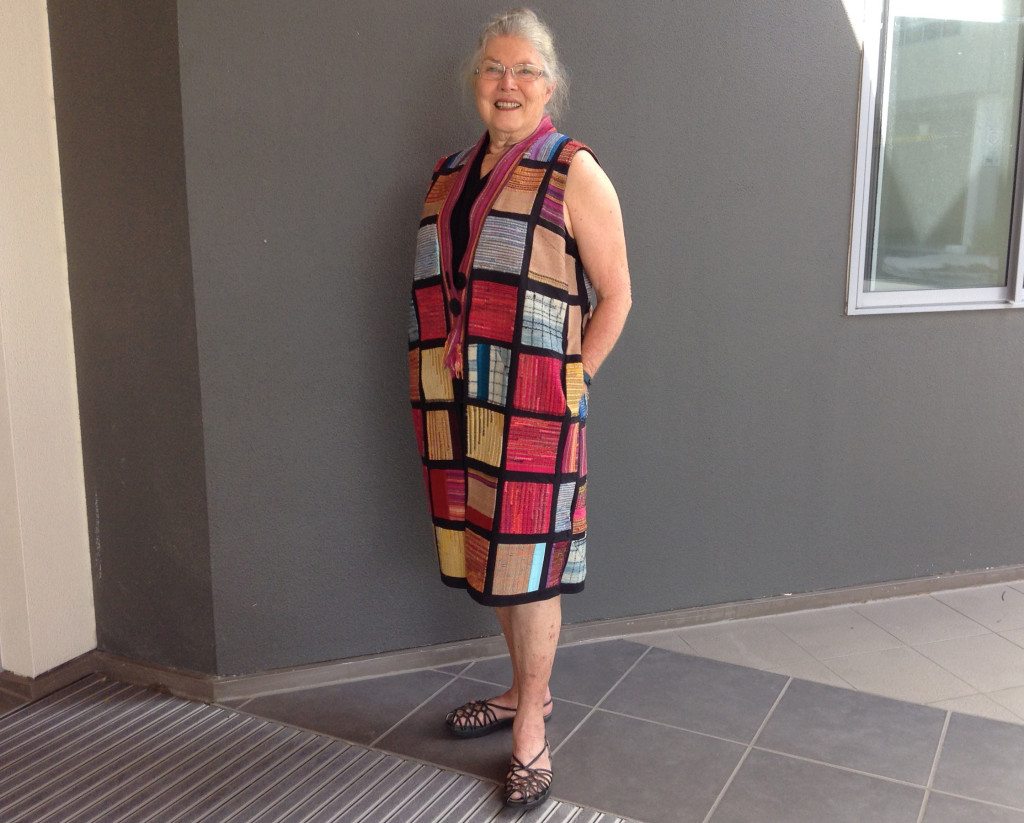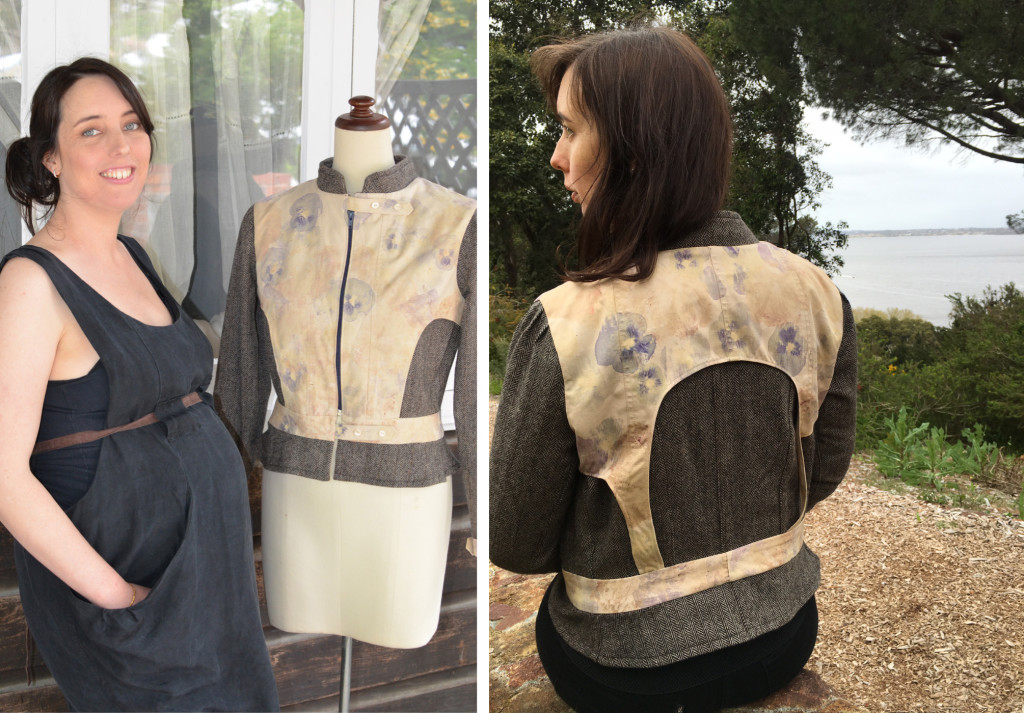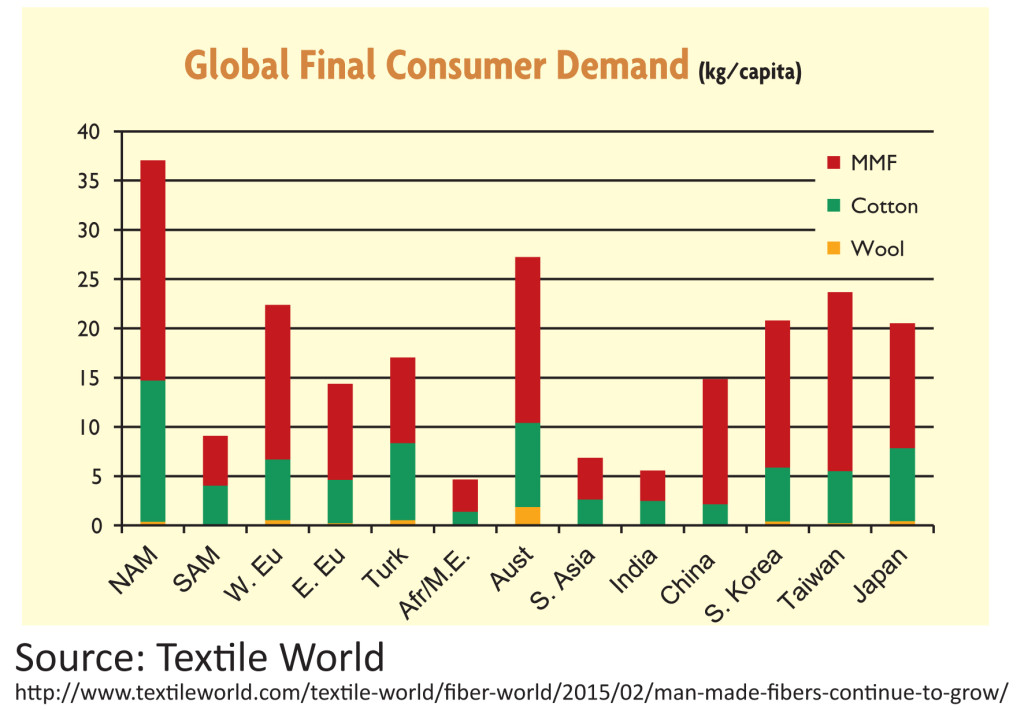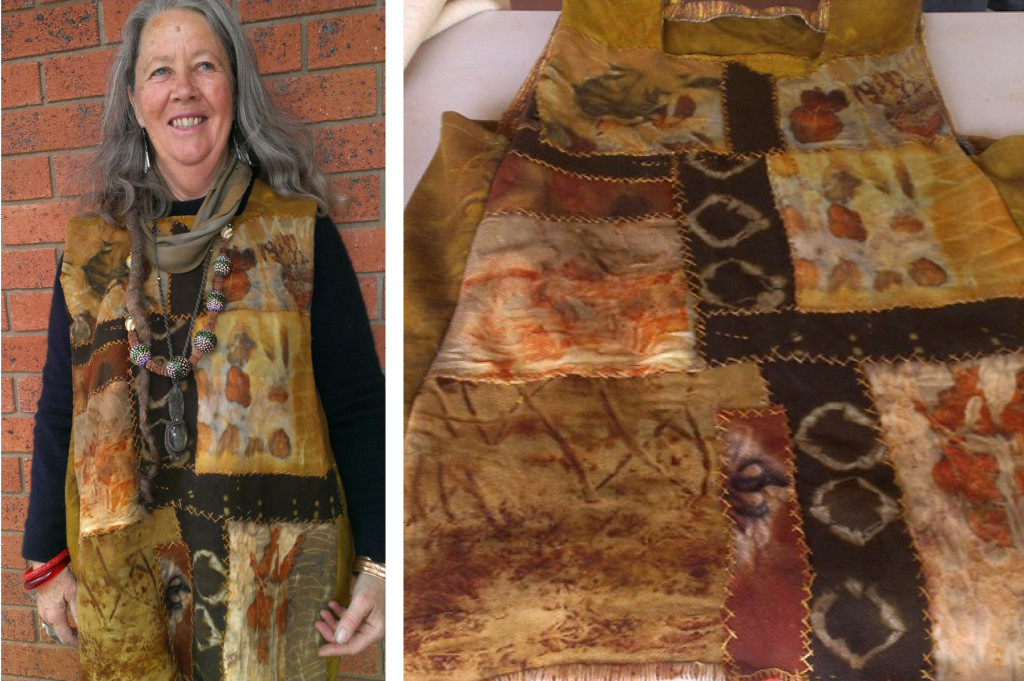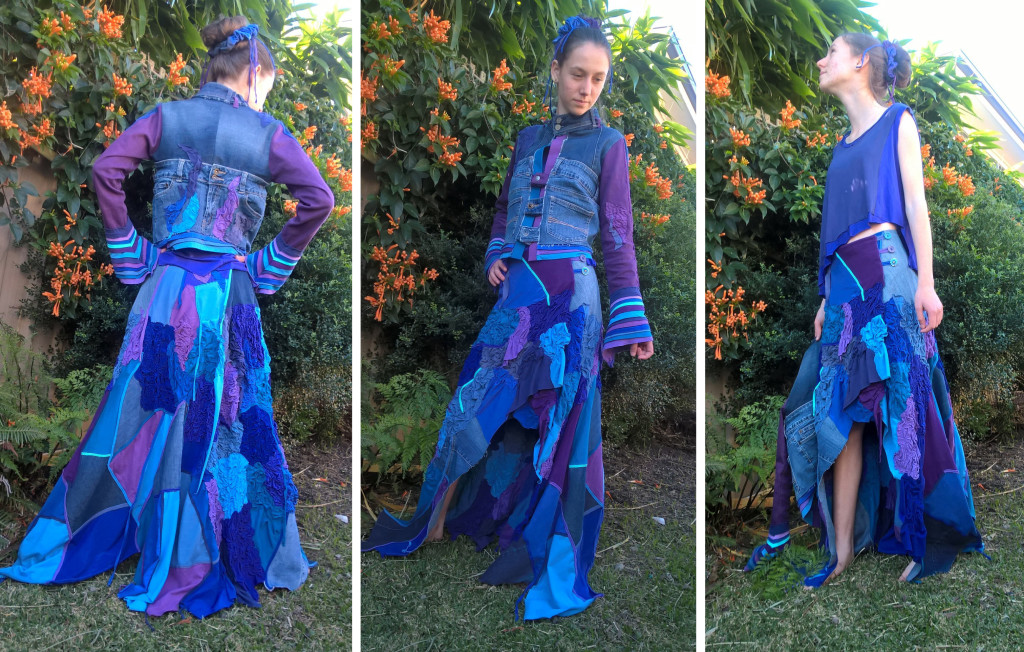Few people sew their own clothes these days because factory-made options are cheap and plentiful, yet this trend creates a clothing surplus that requires creative solutions to keep it out of landfill.
Textile Beat is celebrating four years of upcycling and helping influence a more sustainable clothing culture based on using natural fibres and applying traditional skills in innovative ways.
Textile Beat founder Jane Milburn said the Slow Clothing Manifesto identifies 10 actions we can take to thrive in a material world: think, natural, quality, local, care, few, make, adapt, revive and salvage.
“Clothes do for us on the outside what food does inside – nourish and warm our body and soul. Fast and processed industrial food has had a dramatic impact on health in recent years and similarly the shift to industrial clothing has social and environmental impacts we are only now learning,” Jane said.
